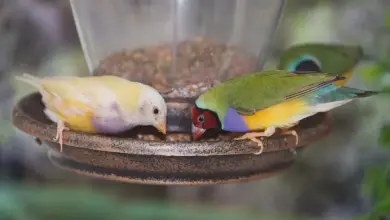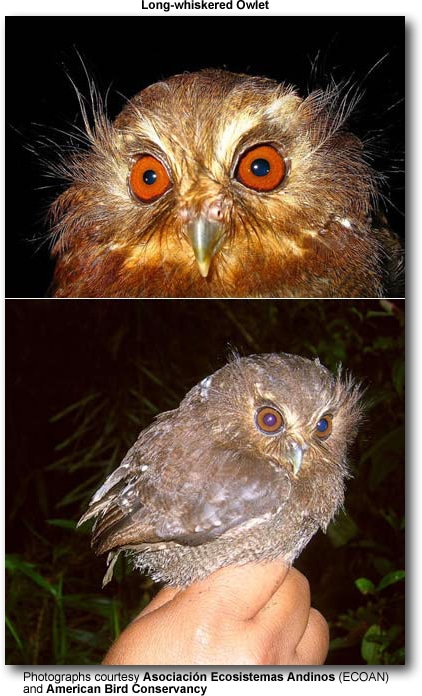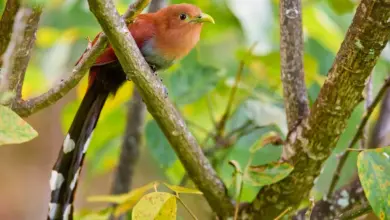Oriental Bay Owls or Asian Bay Owls (Phodilus badius)
The Oriental Bay Owls (Phodilus badius) – also known as Asian Bay Owls or Common Bay Owls – are completely nocturnal (active at night) and occur naturally throughout South and Southeast Asia.
Distribution / Habitat
Their range stretches from north-eastern India across to southeastern China and Vietnam, Thailand, Myanmar, the Malay peninsula, Sri Lanka, southwestern India and the Greater Sunda Islands.
Their preferred habitats are woodland, plantations and mangrove swamps at altitudes of up to 7,220 feet (2200 meters).
These owls are generally rare.
Subspecies and Ranges
- Phodilus badius badius (Horsfield, 1821) – Nominate Race
- Range: Eastern and central Myanmar to Malay Peninsula, southern Thailand, Sumatra, Java, Borneo
- Phodilus badius saturatus (Robinson, 1927) (northern race)
- Range: Sikkim and northeastern India, north and central Myanmar and Thailand (except peninsular) east to Vietnam and southeastern China (southern Yunnan, southwestern Guangxi Zhuang, Hainan Island.). Their presence in Nepal, Bhutan and Bangladesh is unconfirmed.
- Peninsular Bay Owl, Phodilus badius ripleyi (Hussain and Reza Khan, 1978)
- Very limited range in the Anaimalai and Nelliyampathy Hills in the southern Western Ghats, southwestern India.
- Phodilus badius assimilis (Hume, 1877)
- Range: Highlands of central and southern Sri Lanka. Known only from about a dozen specimens.
- Phodilus badius arixuthus (Oberholser, 1932)
- Range: Natuna Islands (Bunguran)
- Phodilus badius parvus (Chasen, 1937)
- Range: Belitung Island, off southeastern Sumatra
Description
Oriental Bay Owls are small to medium sized owls that measure from 9 up to 13 inches (23 – 33 cm) in length; and weigh between 9 – 11 oz (255 – 308 g).
The head is broad and the ears are slightly tufted. They have striking angular facial disks with dark V-shaped facial markings running down the center of the face between the eyes.
The plumage is generally pale buff or light chestnut brown with dark flecks underneath. The plumage above is dark chestnut brown spottedwith black and yellow. The short, rounded wings are dark chestnut brown with black and yellow spots. Their long legs are fully feathered. Their eyes are yellow.
Similar Species:
The Oriental Bay Owls have shorter, more rounded wings, than the Barn Owl.
Breeding / Nesting
They nest in hollow trees and tree stumps about 6.6 – 16.4 feet (2 – 5 meters) above the ground. Suitable nesting sites are often reused over several seasons. The average clutch consists of 3 – 5 eggs.
Diet / Feeding
Oriental Bay Owls feed on small mammals, small birds, reptiles, frogs and insects. They typically hunt their prey from trees.
Calls / Vocalizations
Their calls include whistles, hoots, wails and screams.
Alternate (Global) Names
Bulgarian: ????????? ???? … Chinese: ?, ???, ?? … Czech: Sova indická, sova klíno?elá … Danish: Asiatisk Maskeugle … Dutch: Bruine Uil … Estonian: aasia maskkakk … Finnish: Viitapöllö … French: Chouette baie, Phodile calong … German: Fratzeneule, Maskeneule … Indonesian: Serak Bukit, Wowo wiwi … Italian: Barbagianni baio, Barbagianni baio orientale … Japanese: kongonisemenfukurou, nisemenfukurou … Malay: Jampuk Pantai, lampuk Pantai … Norwegian: Hornslørugle … Polish: P?omykówka uszata, puchówka indyjska … Russian: ????????? ???????? ??????, ????? ??????, ?????? ????????? ??????? … Slovak: perlovka kalong … Spanish: Lechuza Baya Indonesia, Lechuza Cornuda … Swedish: Orientalisk maskuggla … Thai: ???????? … Vietnamese: Cú l?n r?ng
More Owl Information
- Owl Information
- Index of Owl Species with Pictures
- Owl Eyes / Vision Adaptations
- Pygmy Owls
- Barn Owls
- Horned Owls
- Scops Owls



